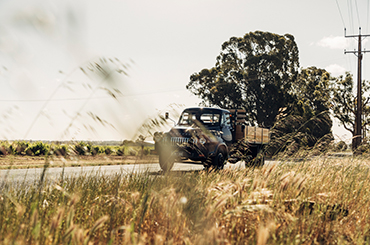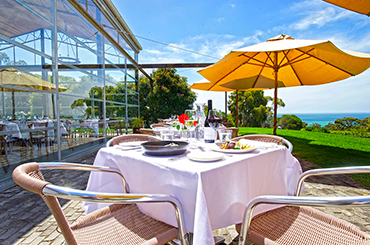If wanderlust has kicked in and your daydreams are taking you to sun-dappled Italy, coastal California, or mountainous South Africa, you’re not alone. You might not be able to touch down at these places for a vineyard tour right now, but you can get to know their key varieties at home.
You could go all out on theming, too, by adding food specialities and ambience alongside the wine. Alternatively, you may prefer to sit quietly, close your eyes and sip – one of the powerful appeals of wine is its ability to transport us.
It’s important to support our local producers, and there are recommendations for doing so below. But with the ongoing impacts of events such as bushfires and lockdowns also hurting the international wine industry, it could use your help, too.

In the know: There are many affordable, delicious Argentinian malbecs to try, but Australia is also offering diverse, quality examples, from the likes of Bleasdale in Langhorne Creek and a wide range of Margaret River producers, to Yarra Yering in Victoria. One producer that tasting team member Ned Goodwin MW recommends is Paul Hobbs of Vina Cobos, and James Halliday shares his homegrown picks.

Beyond borders: Top producers you will find with relative ease in Australia include Moric and Pittnauer. Locally made examples are few and far between, but one winery that champions the variety, alongside the Austrian white grüner veltliner, is Hahndorf Hill.

Wine for good: California has been hit in recent times by the worst bushfires in its history, so you can support the industry by seeking out names such as Colgin, Conn Creek and Hyde de Villaine. In Australia, Bruce Dukes, the winemaker behind former Best Value Winery Domaine Naturaliste, previously worked for filmmaker Francis Ford Coppola’s Napa Valley winery Inglenook, which has influenced his own specialisation in cabernet.

You could go all out on theming, too, by adding food specialities and ambience alongside the wine. Alternatively, you may prefer to sit quietly, close your eyes and sip – one of the powerful appeals of wine is its ability to transport us.
It’s important to support our local producers, and there are recommendations for doing so below. But with the ongoing impacts of events such as bushfires and lockdowns also hurting the international wine industry, it could use your help, too.

Argentina and malbec
Technically, malbec originates in France, but Argentina has adopted the variety and brought it international acclaim. In this part of South America, malbec is grown in sunny vineyards that are among the highest in the world, surrounded by the dramatic, snow-capped mountains of the Andes. The resulting wines are supple and flavourful and will suit lovers of bold reds. Short of immersing yourself in the natural wonder of this altitudinal part of the world, connect to it through wine. For the full experience, pour a glass alongside flame-grilled steaks.In the know: There are many affordable, delicious Argentinian malbecs to try, but Australia is also offering diverse, quality examples, from the likes of Bleasdale in Langhorne Creek and a wide range of Margaret River producers, to Yarra Yering in Victoria. One producer that tasting team member Ned Goodwin MW recommends is Paul Hobbs of Vina Cobos, and James Halliday shares his homegrown picks.

Austria and blaufrankisch
Think of Austria, and it probably conjures images of alpine scenery, cool blue rivers, and pretty villages. For the most part, this country’s wine regions deliver exactly that, with tidy vines set amid stunning, verdant scenes. Blaufrankisch is Austria’s hero indigenous variety, a medium-bodied red with bright acidity, juicy cherry fruit flavour, and complex spice, with enough oomph for shiraz drinkers as well as delicacy to win over pinot noir fans. It’s incredibly food-friendly, too, and can be paired with regional classics like schnitzel and roast pork, or richer fish dishes such as salmon.Beyond borders: Top producers you will find with relative ease in Australia include Moric and Pittnauer. Locally made examples are few and far between, but one winery that champions the variety, alongside the Austrian white grüner veltliner, is Hahndorf Hill.

California and cabernet sauvignon
The relaxed vibe of sunny California is in stark contrast to the glamour of its best-known wine region, the Napa Valley. If you were looking for a luxe wine-country getaway, it’s a great one, complete with high-end hotels, famous restaurants, and chateau-style wineries. Here, luscious cabernet sauvignon dominates the landscape, taking its inspiration from the classic Bordeaux style. Matching it to a burger with melty cheddar cheese or steak and chips would both be comforting options, but it’s certainly a style you could savour alone.Wine for good: California has been hit in recent times by the worst bushfires in its history, so you can support the industry by seeking out names such as Colgin, Conn Creek and Hyde de Villaine. In Australia, Bruce Dukes, the winemaker behind former Best Value Winery Domaine Naturaliste, previously worked for filmmaker Francis Ford Coppola’s Napa Valley winery Inglenook, which has influenced his own specialisation in cabernet.

South Africa and chenin blanc
South Africa has a wine-growing history stretching back to the 16th century and is home to varied and gorgeous regions. From the fluffy clouds and Jurassic-like mountains of the Cape to the lush greenery of the Elgin Valley, there are plenty of beautiful backdrops for a wine tasting. Many reds are made in South Africa’s warm-climate wine regions, both blends and single-varietal styles, but if there’s one variety it’s best known for, it’s without a doubt chenin blanc. While chenin hails from the Loire Valley of France, South Africa has the lion’s share of world plantings. This bright, aromatic white comes in styles from dry and crisp to flavourful and fruity – in South Africa, it is often made similarly to chardonnay. Drink it alongside a dinner of pork chops or roast chicken.
A helping hand: The South African wine industry has been particularly hard hit by Covid-19 due to lockdown-related alcohol bans. If you can, buy direct from the source, with producers to look out for including Badenhorst and Radford Dale. Locally, South African Remi Guise of tripe.Iscariot makes some of the best chenin blanc around.

An embarrassment of riches: There are so many great Italian wines to choose from, it’s impossible to name just a few – get to know the leading regions and look to your favourite wine shop for guidance. Italian varieties are on the rise in Australia, so you have plenty of options here, too. Start with these suggestions from Ned Goodwin MW.

Old and new: For something different, try grower Champagnes like Andre Clouet and Agrapart, with these smaller producers emphasising site and season. At home, Tasmania is producing world-class traditional-method sparkling that is more than worthy of a spot in your wine fridge.

The most popular wines of Italy
Italy is a muse for countless creators and a favourite destination. It’s no wonder, either, given its picture-perfect countryside, gorgeous light, charming architecture and way of life. It’s also the largest producer of wine in the world, with an enormous diversity of styles. By the numbers, sangiovese is the leader. Still, there are many other savoury, textural reds that it would be remiss not to name, such as the country’s ageworthy nebbiolo and plush nero d’Avola. They’re all worth a look, and Italian whites have plenty to offer as well. Take your pick and plan a pizza party.An embarrassment of riches: There are so many great Italian wines to choose from, it’s impossible to name just a few – get to know the leading regions and look to your favourite wine shop for guidance. Italian varieties are on the rise in Australia, so you have plenty of options here, too. Start with these suggestions from Ned Goodwin MW.

France and Champagne
The influence of France on other wine-producing countries is plain to see, not the least in our own backyard. Of its many celebrated wines, however, few have achieved the reach of champagne. This region's sparkling wine is synonymous with celebration and one of the most popular on the planet. We turn to champagne in good times and bad – this year, the pop of a couple of corks could be considered essential. Burgundy comes a close second in its power to excite wine lovers, but champagne rises above for its accessibility as well as authority. Drink your fizz with salty snacks like French fries and gooey cheeses for the ultimate feel-good experience.Old and new: For something different, try grower Champagnes like Andre Clouet and Agrapart, with these smaller producers emphasising site and season. At home, Tasmania is producing world-class traditional-method sparkling that is more than worthy of a spot in your wine fridge.






